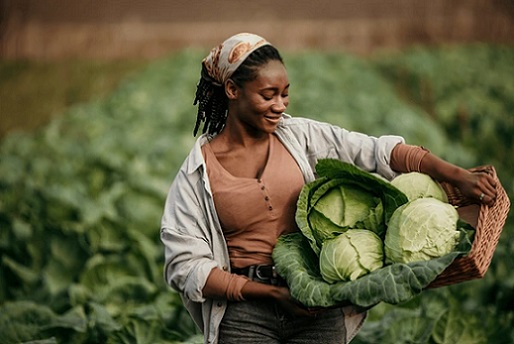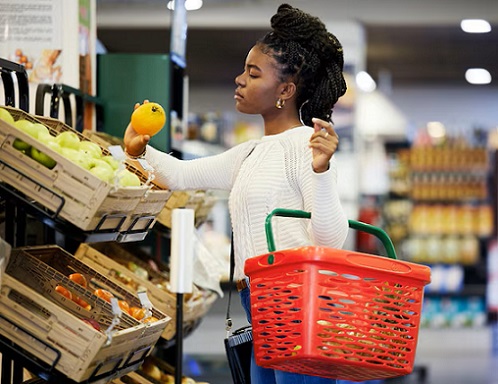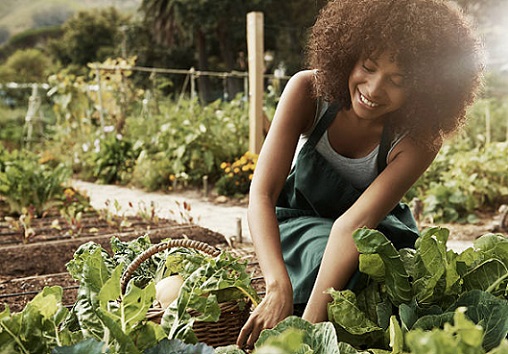Food
5 Compelling Reasons to Grow Your Own Fruits and Vegetables – And Why You Should Start Today

In an age where convenience often trumps quality, more people are rediscovering the joys and benefits of growing their own fruits and vegetables.
Once a common practice in households across the world, kitchen gardens and backyard plots faded from popularity as supermarkets and industrial agriculture took over.
But a quiet revolution is underway. From urban rooftops to suburban backyards, homegrown produce is making a comeback, and for good reason.
Growing your own food isn’t just a nostalgic pastime, it’s a powerful way to improve your health, save money, reduce your environmental footprint, and reconnect with nature. Whether you have a sprawling garden or just a sunny windowsill, cultivating even a small amount of produce can transform the way you eat and live. Here are five compelling reasons to start your own kitchen garden today, backed by facts, health benefits, and practical tips.

1. Unmatched Freshness and Flavor
There’s a reason freshly picked tomatoes taste better than store-bought ones, they are better. Most commercial produce is harvested before it’s fully ripe to survive long-distance transport, often traveling thousands of miles before it reaches your plate. This means it never fully develops its natural sugars and flavor compounds.
When you grow your own, you can harvest fruits and vegetables at peak ripeness, often just minutes before eating. This not only maximizes taste but also preserves vital nutrients. For example, vitamin C in leafy greens begins to degrade as soon as they’re picked. Eating homegrown produce within hours of harvest ensures you get the maximum nutritional benefit.
Tip: Try growing cherry tomatoes, basil, or strawberries, they’re easy to grow and deliver incredible flavor when eaten straight from the plant.
Fun Fact: A study published in the Journal of Agricultural and Food Chemistry found that vine, ripened tomatoes contain up to 30% more vitamin C and lycopene (a powerful antioxidant) than those picked green and ripened off the vine.

2. Superior Quality and Control Over What You Eat
Supermarkets prioritize produce that looks perfect, ships well, and has a long shelf life, not necessarily what tastes best or is most nutritious. As a result, many commercial crops are bred for uniformity and durability, often at the expense of flavor and nutrient density.
When you grow your own, you can choose heirloom or organic varieties known for their taste and health benefits. You also control what goes into your soil and onto your plants, no synthetic pesticides, herbicides, or chemical fertilizers.
Top Health Benefit: Homegrown organic produce has been shown to contain higher levels of antioxidants and lower levels of pesticide residues. According to a meta-analysis in the British Journal of Nutrition, organically grown crops have up to 60% more key antioxidants than conventionally grown ones.
Tip: Use natural pest control methods like companion planting (e.g., marigolds to deter aphids) or neem oil to keep your garden chemical-free.

3. Save Money While Eating Better
While a packet of seeds may cost just a few dollars, it can yield pounds of fresh produce over a single growing season. A single tomato plant, for instance, can produce 10–15 pounds of fruit, far more than the cost of buying tomatoes at the grocery store, especially organic ones.
Even if you start with store-bought seedlings, the long-term savings add up. Plus, many plants, like beans, peppers, and tomatoes, produce seeds you can save and replant the next year, creating a sustainable, low-cost food source.
Top Health Benefit: Eating more fruits and vegetables reduces the risk of chronic diseases like heart disease, stroke, type 2 diabetes, and certain cancers. The CDC recommends 1.5–2 cups of fruit and 2–3 cups of vegetables daily, growing your own makes it easier (and cheaper) to meet these goals.
Tip: Start with high-yield, low-maintenance crops like zucchini, lettuce, radishes, or herbs. These give quick results and encourage continued gardening.
Fun Fact: The National Gardening Association estimates that a well-maintained 600-square-foot vegetable garden can produce over $600 worth of produce annually, on an average investment of just $70.

4. Know Exactly Where Your Food Comes From
"Provenance" — knowing the origin and journey of your food, is increasingly important. With rising concerns about pesticide use, genetically modified organisms (GMOs), and exploitative labor practices in industrial agriculture, many consumers are demanding transparency.
When you grow your own food, you eliminate the mystery. You know whether your carrots were grown in clean soil, if your strawberries were sprayed with chemicals, and how much water and care went into each plant. This peace of mind is priceless.
Top Health Benefit: Reducing exposure to pesticide residues lowers the risk of health issues, especially in children. The Environmental Working Group (EWG) consistently finds that strawberries, spinach, and apples top the list of produce with the highest pesticide loads, making homegrown versions a healthier alternative.
Tip: Use organic compost and natural fertilizers like worm castings or compost tea to enrich your soil safely.

5. Access to a Wider Variety of Fruits and Vegetables
Supermarkets typically stock only a handful of fruit and vegetable varieties, those that are profitable, durable, and visually appealing. This means we miss out on the incredible diversity nature offers.
Imagine biting into a purple carrot, a striped "Green Zebra" tomato, or a fig from a tree in your backyard. When you grow your own, you can experiment with hundreds of unique, flavorful, and nutritious varieties that you’ll never find in stores.
Top Health Benefit: Different colored fruits and vegetables provide a broader spectrum of phytonutrients, natural compounds that support immunity, reduce inflammation, and protect against disease. For example, purple carrots are rich in anthocyanins, while orange ones are high in beta-carotene.
Tip: Try growing unusual varieties like rainbow chard, purple broccoli, or Armenian cucumbers to add color, flavor, and nutrition to your meals.
Fun Fact: There are over 1,500 varieties of heirloom tomatoes, yet supermarkets typically carry fewer than 10.

Getting Started: Simple Tips for Beginners
You don’t need a green thumb or a huge yard to grow your own food. Here’s how to begin:
- Start small: Begin with a few pots of herbs (basil, parsley, mint) or a single tomato plant in a container.
- Choose the right spot: Most vegetables need 6–8 hours of direct sunlight daily.
- Use quality soil: Invest in organic potting mix or enrich garden soil with compost.
- Water wisely: Most plants prefer deep, infrequent watering rather than daily sprinkles.
- Grow what you love to eat: There’s no point harvesting kale if you hate it—start with your favorites.
Final Thoughts
Growing your own fruits and vegetables is more than a hobby, it’s an investment in your health, your wallet, and the planet. It reconnects you with the seasons, reduces food waste, and fosters a deeper appreciation for where your food comes from.
Whether you're harvesting your first homegrown salad or preserving tomatoes for winter, the rewards are immediate and lasting. So grab a trowel, plant a seed, and take the first step toward a healthier, more sustainable lifestyle. You might just find that the best food doesn’t come from a store, it comes from your own hands.

Inexpensive Party Food
Food: Parties are fun but they can be expensive. You have many options to keep the costs down, but the easiest thing you can do is watch how much you are spending on food. If you have hosted parties in the past, you know that food can be one of the most expensive aspects of the event. You don’t have to hire an expensive caterer to have a good time. A little imagination and effort can make a low budget party a memorable occasion. Finger food such as small sandwiches, potato chips, dips, fruit and vegetable trays are fairly inexpensive.
Cheesy Dijon Sausage Cups
This is a great option for informal parties. A great alternative to a professional caterer is to have each of your guests do the catering for you. A potluck allows your guests to become amateur caterers. It also makes sure that each guest has something they like because it is unlikely that someone would bring something they don’t like.
To help your guest and to avoid redundancy, include a suggestion as to what kind of food you would like your guests to bring such as a salad, dessert, and soft drinks. Pizza is an all time party food. Young and old love pizza, and there is a wide selection of toppings that should satisfy all your guests. Don’t serve alcohol if you want to save money. Alcohol free parties are safer, and less out of control. You won’t have to worry about designated drivers, or taking peoples’ keys once they had one too many drinks. In addition, you don’t have to worry about people staying over night. You can have memorable party without spending a bunch of money. When you shop for food, use coupons and look for sales. Always give yourself plenty of time to shop, so you can bargain hunt.
Vegetables With Added Nutritional Value
Cooking Class For Kids And Adults
InternetBusinessIdeas-Viralmarketing Home Page
Tweet
Follow @Charlesfrize









New! Comments
Have your say about what you just read! Leave a comment in the box below.